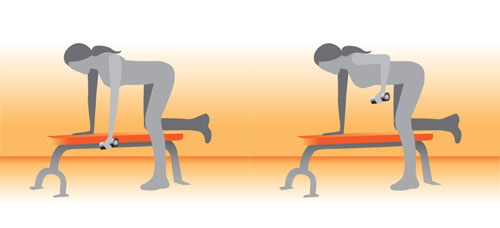General Shoulder Stretches
OVERVIEW
The shoulder is a complex joint comprised of the humeral head (ball) that articulates, or moves, within the glenoid (socket). Surrounding the humeral head and glenoid is a number of soft tissue structures designed to provide stability to the joint, as well as power your arm as you move it in space. The major soft tissue structures include the:
- Labrum – which is similar to a washer and surrounds the glenoid.
- Joint capsule – encompasses the joint and keeps synovial fluid in the joint and provides stability.
- Rotator cuff muscles – a series of four muscles originating on the shoulder blade and attaching on the humeral head. These muscles act to keep the humeral head centered in the glenoid.
- Deltoid muscle – the motor of the shoulder, moves the arm in space.

If injured, these structures may become inflamed and cause pain when they are used or moved. Inflammation and contracture within the joint capsule also commonly occurs, and is analogous to sweater fibers shrinking in the laundry. When this happens, it results in stiffness and diminished range of motion of the shoulder joint. A number of biomechanical studies have demonstrated that this capsule contracture causes abnormal translation of the humeral head as the shoulder is moved through space. When the contracture involves the posterior capsule, the humeral head will pinch the rotator cuff between the acromion when the arm is raised, increasing inflammation and pain.
Recovery of joint range of motion is an important component of treating shoulder pain, and can be obtained with use of a small series of simple and gentle stretches listed below. Internal rotation stretches are exceptionally important to alleviate posterior capsule contracture. Frequency is important to obtain the maximal benefit of these exercises and they should be done 3-5 times daily for at least 4-6 weeks. They should only take about 10 minutes to complete.
FORWARD FLEXION — SEATED POSITION
Sit next to a table on a roller chair. The table should be about at the level of your belly button. Position your injured arm on the table and slide the chair back as you lean over next to the table. This will position your affected arm overhead until you feel a gentle stretch. Hold for 10 seconds and slowly raise to start position. Relax and repeat 10 times.
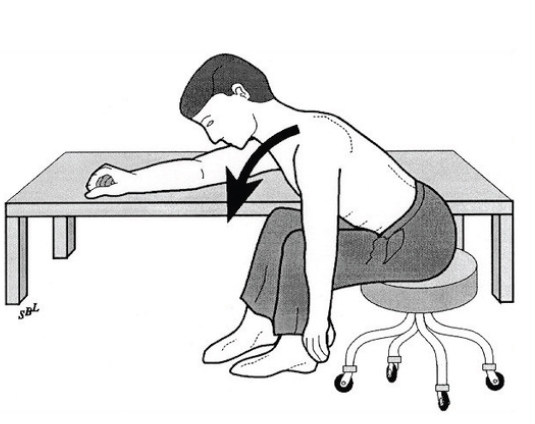
FORWARD FLEXION — SUPINE POSITION
Lie on your back with your legs straight. Use your unaffected arm to lift your affected arm overhead until you feel a gentle stretch. Hold for 15 seconds and slowly lower to start position. Relax and repeat 10 times.

EXTERNAL ROTATION
Stand in a doorway and bend your affected arm 90 degrees to reach the doorjamb. Keep your hand in place and rotate your body as shown in the illustration. Hold for 30 seconds. Relax and repeat 10 times.
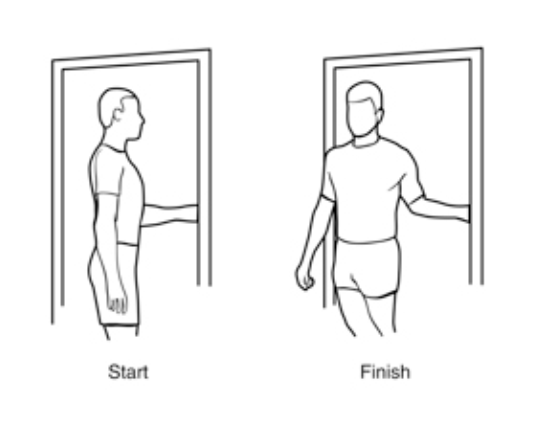
INTERNAL ROTATION STRETCHES
HAND BEHIND BACK TOWEL STRETCH
Grasp a towel behind your back with your injured side being the lower hand. Gently pull your lower hand up your back until you feel tightness. Hold for a 10 count. Repeat 10 times.
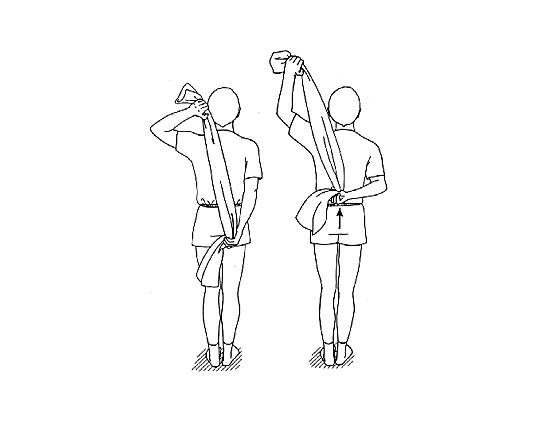
SLEEPER STRETCH
Lie directly on affected shoulder with head well supported by pillows. Slide your arm up to 90° (level with collar bone) and bend your elbow to 90°. Place the hand of the unaffected side just below wrist of affected side and slowly push the forearm down towards the bed/ floor. Make sure that you keep the elbow bent at 90 and you keep the upper arm level with the collarbone. Throughout the stretch, you must ensure that you remain directly on the shoulder, as it is common to roll backwards onto the shoulder blade. Maintain the stretch for at least 30 seconds

ROTATOR CUFF STRENGTHENING
EXTERNAL ROTATION:
Lie on your uninjured side holding a light weight (about 2-5 lbs., e.g. soup can) with your injured arm. Keeping your elbow bent at 90° at your side, raise your hand away from your stomach and return slowly. Keeping a washcloth between your side and elbow helps keep ensure you are rotating at your shoulder. Repeat 10 times.

INTERNAL ROTATION:
Lie on your injured side and hold a light weight (about 2-5 lbs., e.g. soup can) keeping your elbow bent at 90°. Raise your hand toward stomach and return slowly. Repeat 10 times.
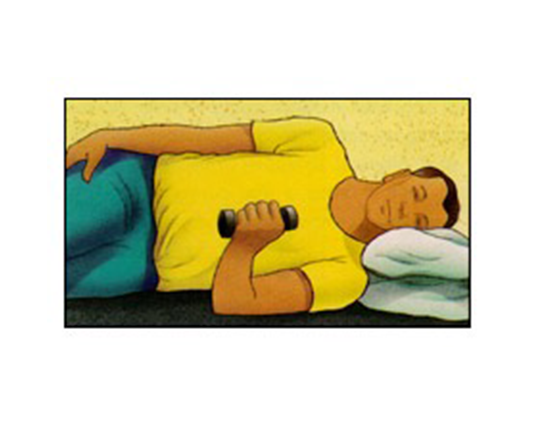
Shrugs:
Stand upright with arms at your side and hold a light weight (about 2-5 lbs) keeping your elbows straight, raise your shoulders straight up towards your ears with your arms staying right at your side. Repeat 10 times
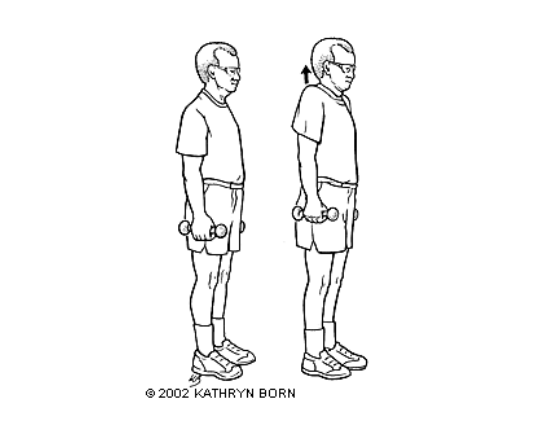
Rows:
Lean over with your other arm supporting your body and hold a light weight (about 2-5 lbs) with your injured arm, bend your elbow and extend your shoulder bringing your hand and weight to your belly. This exercise is meant to mobilize your scapula(wingbone) Repeat 10 times.
